After a four-year hiatus, the Mexican government is re-launching an ambitious plan to help eradicate sargassum from popular beaches across the Mexican Caribbean.
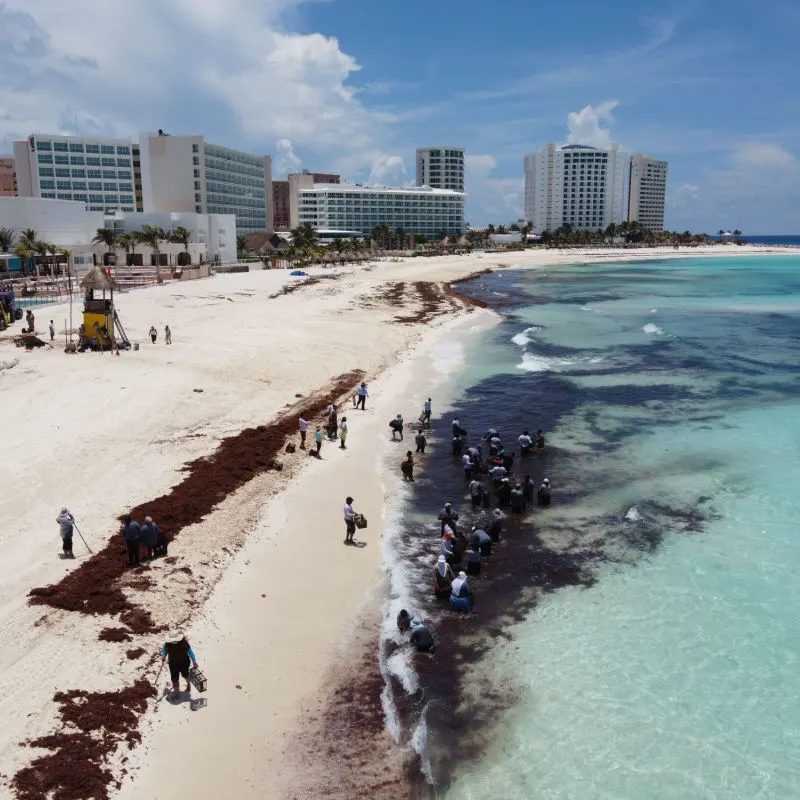
A magnet for international travelers, the Mexican Caribbean’s white-sand beaches are in better shape than ever thanks to new initiatives to tackle sargassum seaweed, a harmless yet unpleasant-smelling macroalgae that forms over the Atlantic each year.
With millions of travelers expected to flock to the region this year, here’s how the government’s newest sargassum measure will work in practice.
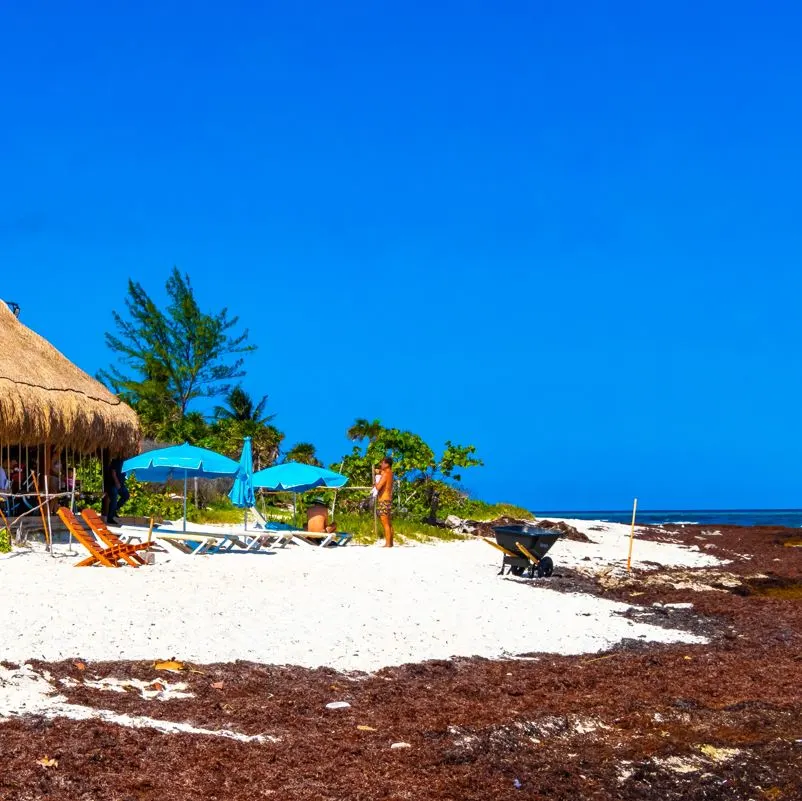
Mexican Government Releases Millions Of Pesos To Help Clean Beaches
Although sargassum is a major concern among Mexican Caribbean travelers – even managing to outpace safety – it’s an issue that has mainly been dealt with at the local or state level.
That’s set to change with the announcement of a massive financial injection of several million dollars to help remove sargassum seaweed from public beaches. Together with other efforts being undertaken by the private sector, the additional funds from the national government are expected to contribute significantly in the fight against sargassum.
Top 5 Travel Insurance Plans For 2023 Starting At $10 Per Week
Easily Earn Points For Free Travel
@olympusmons73 Sargassum slowly going away. Yesterday was bad after a storm. #cancun #mexico #beach #vacation ♬ original sound – OlympusMons
The new initiative, announced this week, will see funds transferred from state coffers to local officials in a number of key tourist hubs, including Cancun, Isla Mujeres, and Playa del Carmen.
According to officials, the new program will target a total of 73 beaches across the Mexican Caribbean, providing much-needed financial resources for smaller locales that have struggled to remove sargassum from their shores.
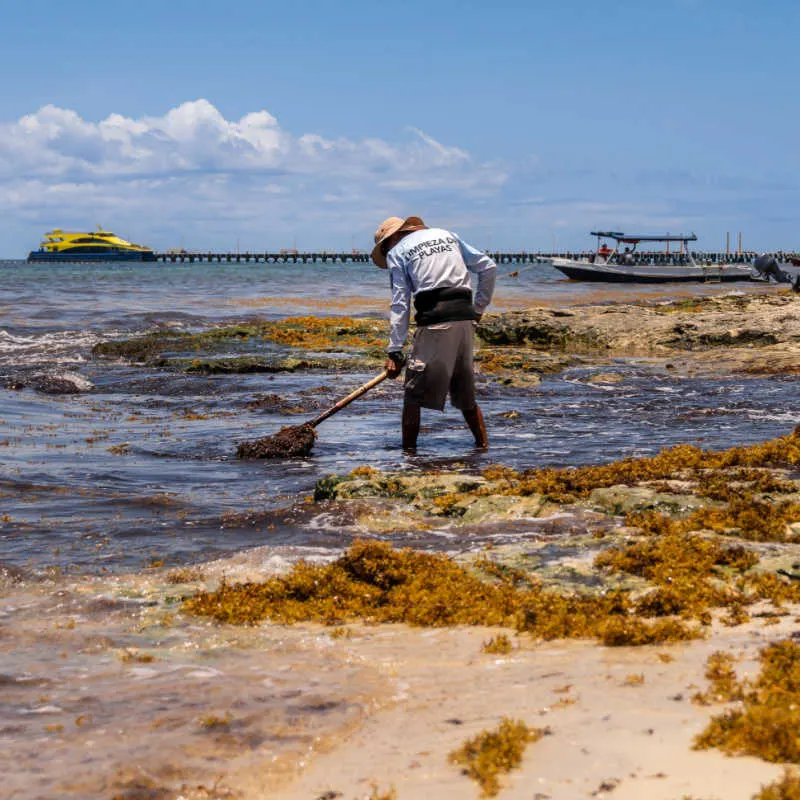
The funds will be used to improve coordination among various stakeholders, including hotels and resorts, as well as volunteer organizations, which all play a role in sprucing up Mexican Caribbean beaches.
Removing tons of sargassum from public beaches is easier said than done. Often involving a complex process consisting of heavy-duty machinery, specialized vessels, and manual labor, cleaning dozens of shores is a daily routine for countless destinations across the region.
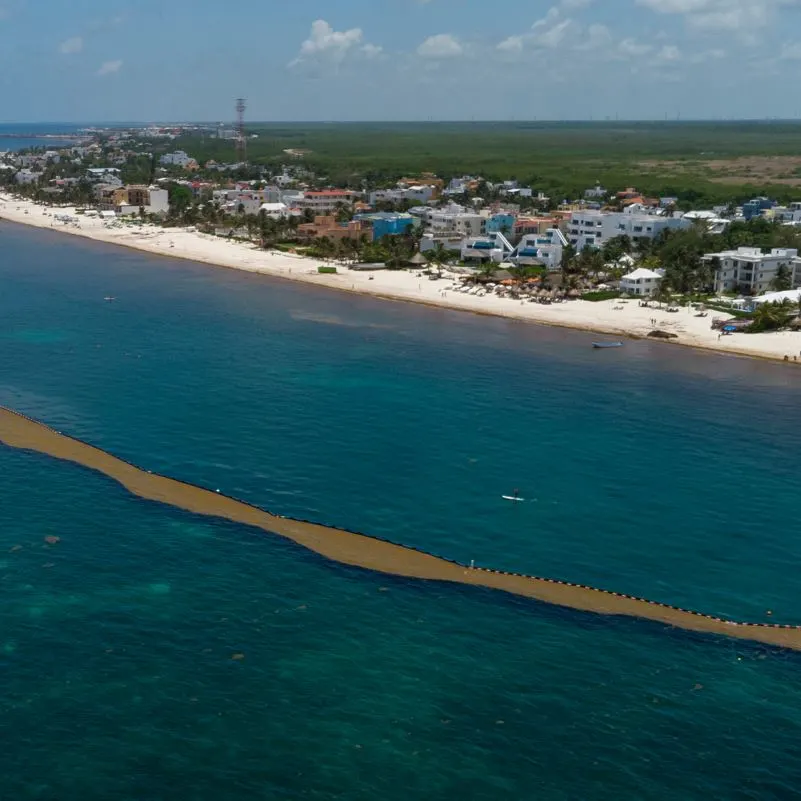
The new initiative will officially kick off starting on August 1 this year and is set to last until the end of the year. According to official documents pertaining to the new government program, sargassum seaweed must be removed no later than 48 hours after washing up on shore.
The following beaches are among the many that are set to receive more funding to help tackle growing amounts of sargassum:
- Cancun: Ballenas, Chacmool, Coral, Del nino, Delfines, Marlín, and Perlas
- Isla Mujeres: Playa Centro, Playa Norte, Aguakan, Aguakan
- Playa del Carmen: Playa Caribe, Pelícanos, Punta Esmeralda, Xcalacoco
- Tulum: Mezzanine, Pescadores, Punta Piedra, Santa Fe
These Are The Cleanest Beaches To Visit This Week
Beaches across the Mexican Caribbean are currently experiencing surprisingly low levels of sargassum, especially compared to earlier predictions which suggested the region would grapple with record-breaking seaweed arrivals this summer.
@travelgxng Would you come to beaches filled with Sargassum? #mexico🇲🇽 #sargassum #cancun #cancunmexico #cancun2023 #mexico #sargassumproblems #seaweed #beach #beaches #whitesandbeach #carribean #quintanaroo #quintanaroomexico #travelgang #travel #travelvlogger #travelvlog ♬ Sunshine (Extended Mix) – TIEKS
That said, several locations are reporting above-average seaweed levels, especially popular destinations just south of Cancun, including Punta Caracol and the beaches around Moon Palace and Royalton Riviera, which are being affected by moderate to abundant quantities of seaweed.
Aside from those exceptions, the rest of the region is currently enjoying pristine beaches, with most destinations reporting low to non-existence sargassum levels this week. Travelers will want to head to Isla Mujeres and Holbox for the cleanest beaches.
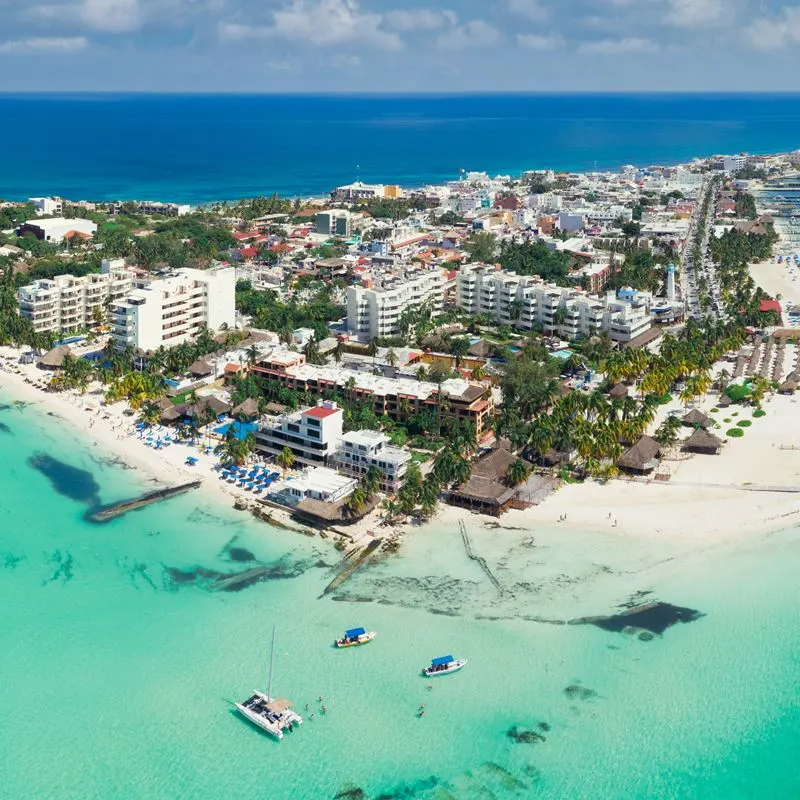
Popular resort hubs, including Playa del Carmen and Tulum, have ramped up efforts to deter sargassum from affecting travelers.
Both destinations have set up temporary barriers and hired more cleaners in an effort to attract more travelers.
And for now, those enhanced measures are paying off, although travelers should always consult the latest sargassum forecasts before heading out.
Plan Your Next Cancun Vacation:
Traveler Alert: Don’t Forget Travel Insurance For Your Next Trip!
Choose From Thousands of Cancun and Riviera Maya Hotels, Resorts and Hostels with Free Cancellation On Most Properties
↓ Join the community ↓
The Cancun Sun Community FB group has all the latest travel news, conversations and tourism Q&A’s for the Mexican Caribbean

Subscribe to our Latest Posts
Enter your email address to subscribe to The Cancun Sun’s latest breaking news affecting travelers, straight to your inbox.

William Windsor
Wednesday 2nd of August 2023
For starters who ever wrote this article needs to think of another career because a journalist is supposed to report the truth , you stated it's harmless ? You're so wrong because sargassum gives off a highly toxic gas that can affect your lungs , try doing some research before you print something, secondly I could save the government millions because I have a way of removing this sargassum at low cost . The beaches here in Puerto Morelos Quintana Roo are not free of sargassum. William.
Damian
Tuesday 1st of August 2023
If you don't buy drugs, get stupid drunk or associate with prostitutes, Mexico is safer than US cities. There are less drug addicted homeless, ghetto music types and asshole bicyclists too. Instead of watching out for needles and human poo, you have to watch out for holes in the sidewalk. And just drink bottled water.
Tom Hindman
Tuesday 1st of August 2023
Big deal. So . . . what are they going to do with the money? Hire more workers to clean the beaches?? Wow! That’s going to keep the beaches clean! Erect more barriers that don’t work to stop the sargasso? Money alone won’t solve the problem. And, it would be nice if the article had just a bit more detail.